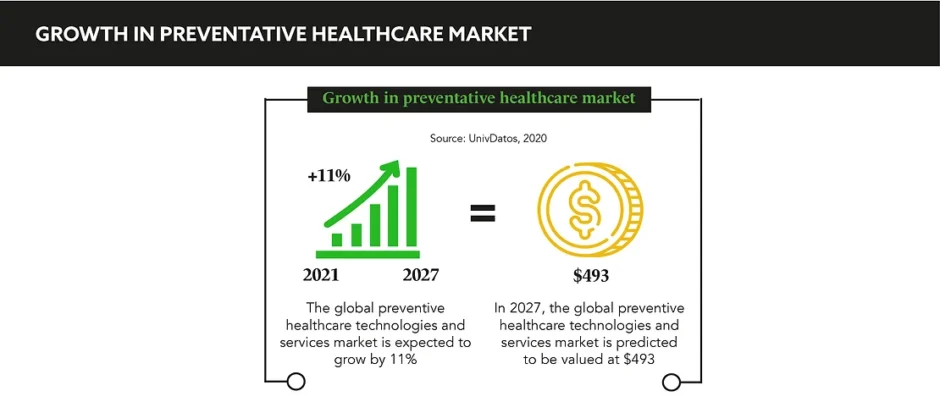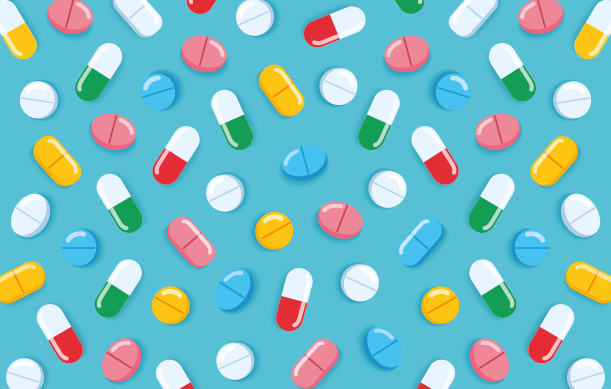Tech giants have seized a huge share of the health and preventive technology market, but how could partnerships between the pharmaceutical and tech industries benefit patients and healthcare systems?
Words by Cheyenne Eugene
Treatment without prevention is simply unsustainable” is a quote attributed to Bill Gates, one of the fathers of modern technology. While there have always been threads of the prevention ideology running throughout Western medicine — Hippocrates observed that disease could be prevented through diet, sleep, and exercise, and Edward Jenner pioneered prevention via vaccine — now, that thread is weaving into an expansive fabric of preventative technologies, blanketing the healthcare market.
In the modern world, technology is our insight provider and disseminator; if we have a question about our health, Dr Google is on hand, when we want more health autonomy, we buy wearables and download apps. Big tech is gaining a larger stake in preventative health, but should the pharmaceutical industry feel threatened or hopeful? What potential lies in partnership, not only for these two parties, but for patients and the healthcare sphere overall?
“Every company wants a piece of the healthcare pie,” says Dr Bertalan Meskó, Director, The Medical Futurist Institute. Tech giants are capitalising on gaps in the healthcare market, be that in telehealth services, artificial intelligence for medical decision-making, supercomputers for life science research, or wearables and devices that measure health parameters. But this technology does not always stand alone or necessarily act as a competitor to pharma: “[Tech companies] do not currently produce any medicines, pills, potions, or lotions, but what they do is create a lot of complimentary tech that can be wrapped around that,” says Kevin Connor, Digital Health Lead, Novo Nordisk. “I think that pharma and tech are seeing this as a journey together.”
Pharma and tech are seeing this as a journey together
When aligned, the pharma, tech, and healthcare triad hold life-changing possibilities for patients. Pharma acknowledges that it is no good just throwing expensive medicines at a healthcare system and seeing what sticks, they have to work to support and add value to the entire ecosystem. “Pharma can develop the most innovative drugs ever made, but if healthcare systems cannot afford to pay for these medicines, all you are doing is eroding that surface,” states Connor. By developing preventative, diagnostic, screening, and akin technologies, pharma and tech will be adding value, rather than detracting it. Connor expands on this: “If healthcare budgets are constantly in the austerity model, then spending is limited… Picking patients up sooner and preventing disease means that there is more money in the budget for patients who are unfortunately [at a later stage in their illness] to go on to medicines that are high cost.” In that sense, pharma wants to avoid standing in its own way.
Some companies seem to be finding their place in the preventative technology landscape. Meskó elaborates: “I see pharma companies investing more these days into a new kind of reimbursement model: packaging a medication with a digital health sensor or app.” He continues: “Such packages would allow pharma companies to contribute to the prevention of unnecessary side effects or hospitalisations. However, they seem to be more interested in the monitoring side of the process than initial prevention.” Investments in medication and digital health service packages would be rewarded more by healthcare providers, establishing a better return-on-investment. “The reason why they are rewarded more for such packages is that it saves on long-term costs for patients and the healthcare system in general. Such a package might cost more today, but patients can avoid having side effects or getting hospitalised,” concludes Meskó.
The COVID-19 crisis shed light on both the importance of monitoring and prevention, and the urgent need for digital solutions. Combine both these forces and the potential in patient care, market access, and ROI is boundless. “When digital solutions are in the spotlight, prevention gets there too,” affirms Meskó. However, pharma needs to partner to make this possible: “While pharma companies have the expertise, knowledge, and experience in developing innovations for healthcare, tech companies know how to create products patients would want to use.”
The transformation generated by COVID-19 has permeated every facet of healthcare, from remote consultations to digitised clinical trials. Attitudes towards health have also seen huge shifts as we have all borne witness to how easily our health systems can become overwhelmed. The echoes of Hippocrates and Jenner are ringing true: prevention is better than cure. As summarised by Meskó: “I see a promising future for us all when pharma and tech start combining their strengths for the benefit of patients.”







